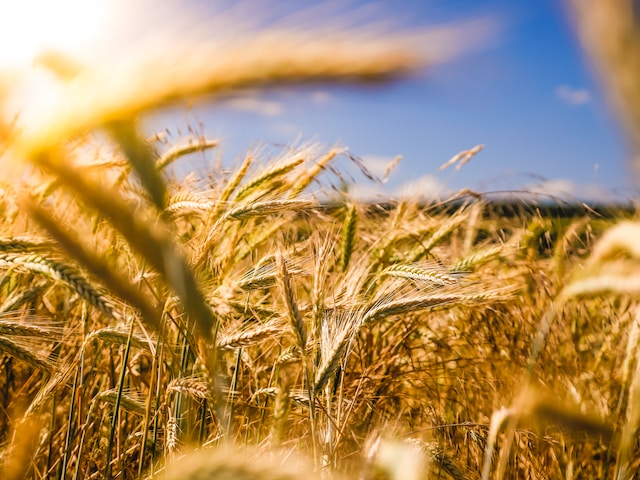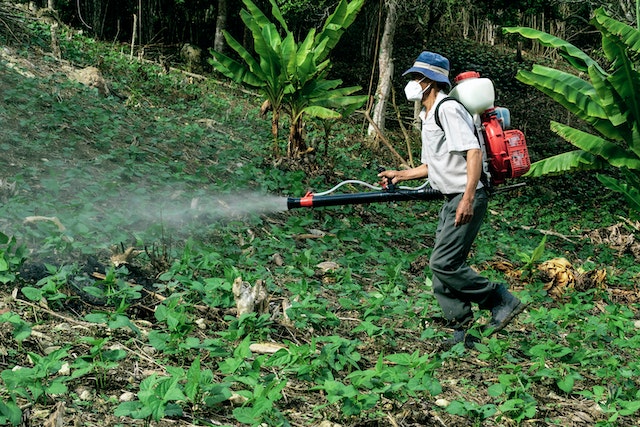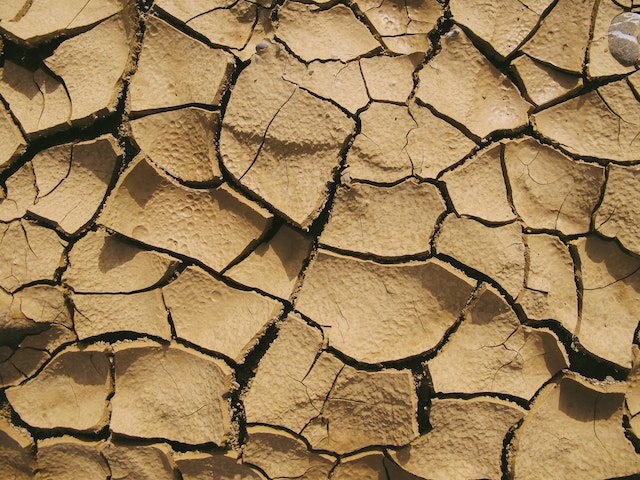Welcome to the fascinating world of conventional farming, where science and agriculture combine to feed the world’s ever-increasing population. In this piece of writing, we’ll look at the controversial but extensively used method of using synthetic inputs. Discover its benefits, drawbacks, and ongoing search for sustainable solutions in our quest for food security.
Table of Contents
Understand Conventional Agriculture

Let’s start with the Conventional farming definition: Conventional agriculture or chemical farming refers to the traditional approach to agriculture that relies heavily on synthetic inputs. These inputs are chemical fertilizers, pesticides, and herbicides, as well as mechanized equipment. This method has been widely practised for many decades and has led to significant advancements in food production. But it also comes with various benefits, challenges, and drawbacks.
Conventional farming has its origins in the emergence of human settlements and the shift from nomadic hunter-gatherer civilizations to settled communities. Early civilizations realized the huge potential of agriculture when they settled in rich river valleys such as the Nile in Egypt, the Indus in the Indian subcontinent, and the Euphrates and Tigris in Mesopotamia.
Domestication was a turning point in history, when people domesticated wild plants and animals, laying the groundwork for agricultural methods that would remain throughout the centuries.
Key Characteristics of Conventional Farming

- Chemical Inputs: Conventional farmers use synthetic fertilizers to provide essential nutrients to crops, promoting their growth and maximizing yields. They also use chemical pesticides and herbicides to control pests and weeds that may threaten crop production.
- Mechanization: Conventional farming relies heavily on machinery and equipment, such as tractors, harvesters, and irrigation systems, to perform various tasks, including ploughing, planting, and harvesting. Mechanization helps improve efficiency and reduce labour requirements.
- Monoculture: Conventional farmers often grow a single crop species over large areas, known as monoculture. Monoculture allows for simplified management and large-scale production but may increase vulnerability to pests, diseases, and environmental challenges.
- Intensive Land Use: Conventional farming practices prioritize high yields and large-scale production. As a result, they tend to intensively use available land to maximize output.
- Genetically Modified Organisms (GMOs): Some conventional farmers utilize genetically modified crops, which have been altered at the genetic level to exhibit specific traits, such as resistance to pests or herbicides.
- Irrigation: Conventional farming frequently involves irrigation to ensure a consistent water supply, particularly in regions with limited rainfall.
- Synthetic Growth Enhancers: Growth hormones and other synthetic substances may be used in conventional livestock farming to promote faster growth and higher production.
Benefits of Conventional Farming

- Increased Yield: Conventional farming practices are designed to maximize crop yields, ensuring a stable and abundant food supply for a growing global population.
- Efficiency: The use of machinery and technology in conventional farming allows for more efficient land preparation, planting, and harvesting processes.
- Affordability: Conventional farming methods are often more affordable initially, as the inputs and equipment are readily available and widely used.
- Consistent Quality: Conventional farming strives for uniformity and predictability in crop quality, making it easier to meet market demands.
- Knowledge Transfer: Conventional farming practices have been passed down through generations, creating a wealth of knowledge and experience that farmers can draw upon.
- Adaptability: Conventional farming can be adapted to different geographical locations and a wide range of crops, making it applicable in various regions.
Conventional farming has played a crucial role in meeting the demands of a growing global population and achieving higher crop yields. But it has also faced criticism for its environmental impact and sustainability concerns.
Challenges of Conventional Farming

- Environmental Impact: The heavy use of chemical fertilizers, pesticides, and herbicides in conventional farming can lead to soil degradation, water pollution, and harm to non-target organisms, including beneficial insects and wildlife.
- Dependency on Fossil Fuels: Conventional farming relies on machinery that often runs on fossil fuels, contributing to greenhouse gas emissions and climate change.
- Loss of Biodiversity: Monoculture practices in conventional farming can lead to a reduction in biodiversity as it favours a limited number of high-yielding crop varieties.
- Soil Erosion: Intensive ploughing and cultivation in conventional farming can lead to increased soil erosion, reducing soil fertility and long-term productivity.
- Resistance and Residue: Pests and diseases can develop resistance to chemical inputs over time, leading to the need for stronger chemicals. Additionally, pesticide residues on crops may pose health risks to consumers.
- Water Depletion: Conventional irrigation practices can lead to the depletion of water resources, especially in water-scarce regions.
Drawbacks of Conventional Farming

- Health Concerns: The use of synthetic chemicals in conventional farming may result in residues on food products, which could have potential health implications for consumers.
- Economic Viability: Conventional farming can be financially risky for small-scale farmers due to high input costs and market volatility.
- Long-term Sustainability: The reliance on non-renewable resources, such as fossil fuels and finite minerals, raises concerns about the long-term sustainability of conventional farming.
- Food Safety: Intensive farming practices and large-scale operations can increase the risk of foodborne illnesses and contamination.
- Environmental Degradation: The negative environmental impact of conventional farming, such as soil degradation and water pollution, can harm ecosystems and wildlife.
- Reduced Nutritional Value: Some studies suggest that intensive farming practices may lead to a decline in the nutritional value of certain crops over time.
Better Options Than Chemical Farming

There are several alternative and more sustainable farming practices that offer solutions and better options than conventional farming. These methods aim to reduce environmental impact, promote biodiversity, improve soil health, and enhance the overall sustainability of agriculture.
Popular Alternatives to Conventional Agriculture
- Residue-Free Farming: Residue-free farming, chemical residue-free farming, or low-residue farming, focuses on cultivating crops with the limited or no use of synthetic pesticides, herbicides, or chemical fertilizers. The primary goal is to reduce the presence of harmful residues in agricultural produce, ensuring consumer safety and environmental sustainability.
- Organic Farming: Organic farming avoids the use of synthetic chemicals, such as pesticides and fertilizers, and relies on natural alternatives. It promotes biodiversity, reduces soil erosion, and enhances soil fertility through practices like crop rotation, composting, and biological pest control.
- Zero Budget Natural Farming (ZBNF): In Natural farming, farmers don’t use external inputs like chemicals or fertilizers. They use natural methods like inter-cropping and homemade composts, which cover their expenses, making it a cost-free way of farming. ZBNF aims to enhance soil fertility, reduce costs, and improve farmers’ livelihoods by adopting nature-centric methods.
- Regenerative Agriculture: This approach focuses on restoring and improving the health of the soil by increasing organic matter, sequestering carbon, and enhancing biodiversity. Regenerative practices include minimal tillage, cover cropping, rotational grazing, and agroforestry.
- Agroecology: Agroecology emphasizes the integration of ecological principles into agriculture. It promotes the use of local resources, traditional knowledge, and diverse farming systems to create sustainable and resilient food production.
Other Alternative Farming Methods
- Permaculture: Permaculture is a design philosophy that seeks to create self-sustaining agricultural systems modelled after natural ecosystems. It emphasizes diversity, closed-loop systems, and minimal waste.
- Hydroponics and Aquaponics: These soilless farming methods allow for resource-efficient cultivation in controlled environments. Hydroponics involves growing plants in nutrient-rich water solutions, while aquaponics combines fish farming with hydroponics, using fish waste as a nutrient source for plants.
- Vertical Farming: Vertical farms use stacked growing systems in urban areas, maximizing space and reducing the need for large agricultural land. They often rely on controlled environments and hydroponics.
- Integrated Pest Management (IPM): IPM is a holistic approach to pest control that combines various strategies, such as biological control, crop rotation, and selective pesticide use, to minimize the impact on beneficial organisms and the environment.
- Agroforestry: Agroforestry involves integrating trees or shrubs with crops or livestock. This practice provides multiple benefits, including improved soil health, biodiversity, and climate resilience.
- Community Supported Agriculture (CSA): CSA models involve direct partnerships between farmers and consumers, where consumers subscribe to receive a share of the farm’s produce regularly. This approach fosters a closer connection between farmers and the community and promotes locally grown food.
- Crop Diversification and Rotation: Rotating crops and diversifying plant species can help break pest and disease cycles, improve soil health, and reduce the need for chemical inputs.
These alternative farming methods not only reduce the negative environmental impact associated with conventional farming but also offer the potential for increased resilience, improved food quality, and long-term sustainability. Transitioning to these approaches may require changes in farming practices, government policies, and consumer preferences, but they hold promise for a more sustainable and resilient agricultural future.
Bottom Line…
Conventional farming has been important in feeding more people and getting better harvests. However, it also harms the environment and is not sustainable. The heavy use of synthetic chemicals can lead to soil degradation, water pollution, and harm to non-target organisms, including beneficial insects and wildlife. Additionally, the reliance on fossil fuels for machinery and transportation contributes to greenhouse gas emissions and climate change.
The solution to the problems is the adoption of other sustainable farming methods. These other ways of farming help the environment by reducing harm compared to chemical farming. They also give the chance for stronger crops, better food, and lasting sustainability.

